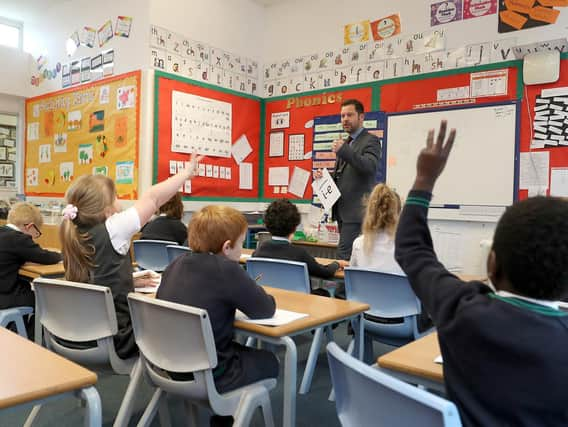Almost 100,000 pupils across Yorkshire and the Humber in 'super-sized' classes, figures suggest


Ministers have been accused of “pulling up the ladder” for disadvantaged students, as data from the Department for Education shows that across the country more than 900,000 pupils are in large classes, an increase of more than 20 per cent over the last decade.
Across Yorkshire and the Humber, 99,782 pupils have been in classes of more than 30 during the 2020/21 academic year.
Advertisement
Hide AdAdvertisement
Hide AdThe largest number of children in big classes could be found in Leeds, with 14,335 pupils.
Bradford had the second highest recorded number , with 10,650 children in classes of more than 30, with Sheffield and North Yorkshire both also having more than 10,000 pupils in this scenario.
Nationally, the average class size now sits at 24.54 pupils, up from 23.39 ten years ago, with the number of children in large classes having jumped from 747,531 to 900,672.
Shadow Child Poverty Secretary Wes Streeting said: “Super sized school classes show that Boris Johnson continues with the Conservative tradition of pulling up the ladder.
Advertisement
Hide AdAdvertisement
Hide Ad“Parents do not want to see their children crammed into supersized classes and the evidence shows that kids from the poorest backgrounds are hit hardest.”
Shadow Schools Minister Peter Kyle said the Prime Minister “promised that education would be a priority on his watch”.
He added: “Instead, his Government has continued with the Tory trend of rising class sizes and lowering social mobility.
“This was a major problem before the pandemic, this is now a major crisis.”
Advertisement
Hide AdAdvertisement
Hide AdA spokesperson for the Department for Education said: “Schools and education staff have gone above and beyond over the course of the pandemic to make sure every child receives the education they deserve.
“At primary, average class sizes have decreased this year compared with 2019/20 – the majority of primary schools have 27 pupils or less per class. At secondary school class sizes remain stable despite an increase of almost 800,000 pupils in the system since 2010.
“We have also created an additional 1 million school places between May 2010 and May 2019, the largest increase in school capacity for at least two generations.”